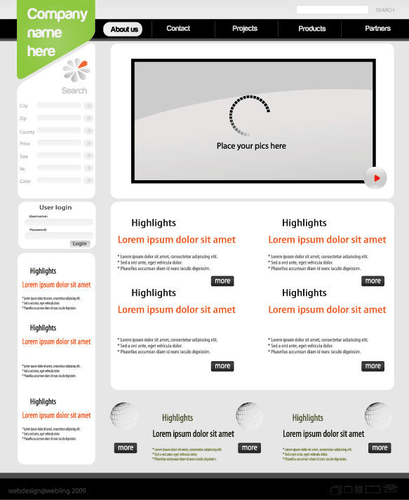
An accrual accountingadjustment brings in an expense in advance of making payment or receiving aninvoice. A prepayment accounting adjustment is made when a business pays inadvance for a service that will take place over a period of time. Similarly, anaccounting adjustment is made when the business receives income in advance ofsupplying its customer. In accounting this means to defer or to delay recognizing certain revenues or expenses on the income statement until a later, more appropriate time. Revenues are deferred to a balance sheet liability account until they are earned in a later period.
Adjusting entry for Deferred revenue
- For example, if a company receives payment in advance for a service to be provided over several months, the initial cash receipt is recorded as a liability (unearned revenue).
- This might include adjusting revenues and expenses to their proper period or reconciling discrepancies between ledger accounts and physical counts.
- This involves reviewing invoices, receipts, and other documents to identify any transactions that have not been recorded in the accounting system.
- If you haven’t decided whether to use cash or accrual basis as the timing of documentation for your small business accounting, our guide on the basis of accounting can help you decide.
- Both IFRS and GAAP emphasize the importance of disclosure in foreign currency translation.
Adjusting entries ensure that revenues and expenses are recorded in the correct accounting period, adhering to the accrual basis of accounting. This alignment is crucial for accurately calculating net income, which is a key indicator of a company’s Restaurant Cash Flow Management profitability. For instance, without adjusting entries, revenues might be overstated or understated, leading to an inaccurate representation of the company’s earnings. Similarly, expenses that are not properly matched with the corresponding revenues can distort the net income figure, misleading investors and other stakeholders.

Adjusting Journal Entries – Unearned Revenue

Because Allowance for Doubtful Accounts is a balance sheet account, its ending balance will carry forward to the next accounting year. Because Bad Debts Expense is an income statement account, its balance will not carry forward to the next year. Non-cash expenses – Adjusting journal entries are also used to record paper expenses like depreciation, amortization, and depletion. These expenses are often recorded at the end of period because they are usually calculated on a period basis.

Types and examples of adjusting entries:
While adjustments in accounting examples estimates cover adjusting entries that record non-cash items, such as allowance for doubtful accounts, depreciation expense, or the inventory obsolescence reserve. Adjusting entries are entered using the accrual accounting method wherein transactions are recorded when a company performs services, rather than when it receives payment. The essence of the different types of adjusting entries is to convert cash transactions into the accrual accounting method which is based on the revenue recognition principle. This principle requires that revenue is recognized in the period in which it was earned, rather than the period in which cash is received.
- If the loan specifies an annual interest rate of 6%, the loan will cost the company interest of $300 per year or $25 per month.
- The balance in Accounts Receivable also increases if the sale was on credit (as opposed to a cash sale).
- Deferrals involve postponing the recognition of revenues and expenses to future periods.
- Similarly, if a business incurs an expense in one period but pays for it in the next, an accrual entry is necessary to reflect the expense in the correct period.
- The ending balance in Depreciation Expense – Equipment will be closed at the end of the current accounting period and this account will begin the next accounting year with a balance of $0.
- Accruals are adjustments made for revenues that have been earned but not yet recorded, and expenses that have been incurred but not yet paid.
- Adjusting entries are essential because they ensure that the financial statements of a company accurately reflect its financial position at the end of the accounting period.
- S.-based company has a subsidiary in Europe, the subsidiary’s financial statements, initially in euros, must be translated into U.
- The journal entry done for accrued expenses (or accrued liability) is one of the main types of adjusting entries.
- This process ensures consistency and comparability in the financial reports.
- Unearned Revenues is a liability account that reports the amounts received by a company but have not yet been earned by the company.
- The transactions which are recorded using adjusting entries are not spontaneous but are spread over a period of time.
In cash accounting, revenues and expenses are recorded only when cash is exchanged, reducing the need for period-end adjusting entries. In accrual accounting, the timing of recording transactions is independent of cash movements. Adjusting entries play a vital role in this process, ensuring that the financial statements fixed assets accurately reflect the business’s economic activities. Adjusting entries help align revenues and expenses with the correct time periods, providing a clearer picture of a company’s financial health.

ASC 842 Journal Entries for Operating Leases

According to the accrual concept of accounting, revenue is recognized in the period in which it is earned, and expenses are recognized in the period in which they are incurred. Some business transactions affect the revenues and expenses of more than one accounting period. For example, a service providing company may receive service fees from its clients for more than one period, or it may pay some of its expenses for many periods in advance. All revenues received or all expenses paid in advance cannot be reported on the income statement for the current accounting period. They must be assigned to the relevant accounting periods and reported on the relevant income statements.
This process is essential for maintaining accurate financial records and ensuring compliance with accounting standards. Companies must use exchange rates to translate foreign transactions, which can fluctuate and impact the financial statements. Provisions are the amounts of money provided to a business to anticipate costs. The allowance for doubtful accounts is the most common provision and the journal entry for this is one of the main types of adjusting entry. Allowance for doubtful accounts can be used if you offer credit to customers and anticipate they may miss payments. For instance, assume ABC Company, a construction company begins construction in one accounting period but does not invoice the customer until the work is complete in six months.






